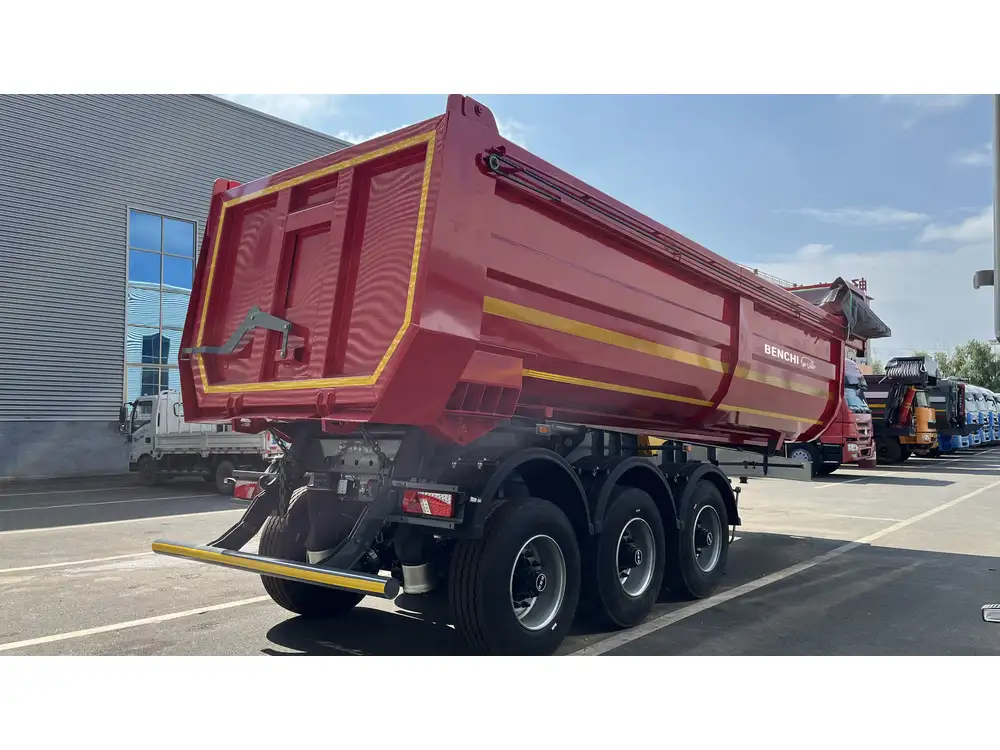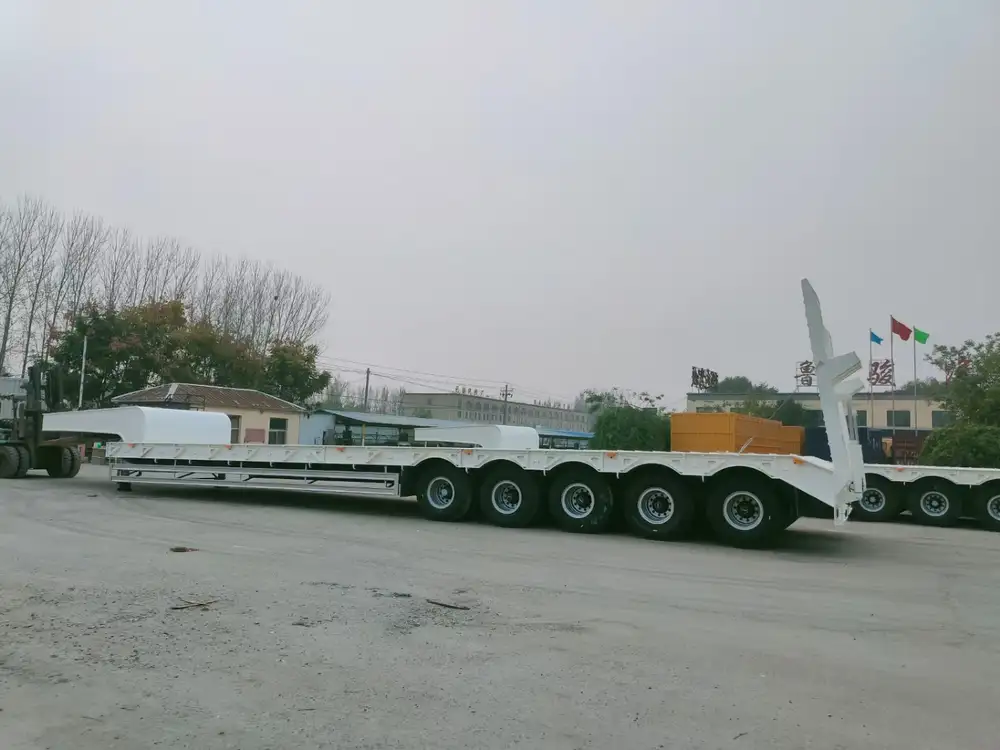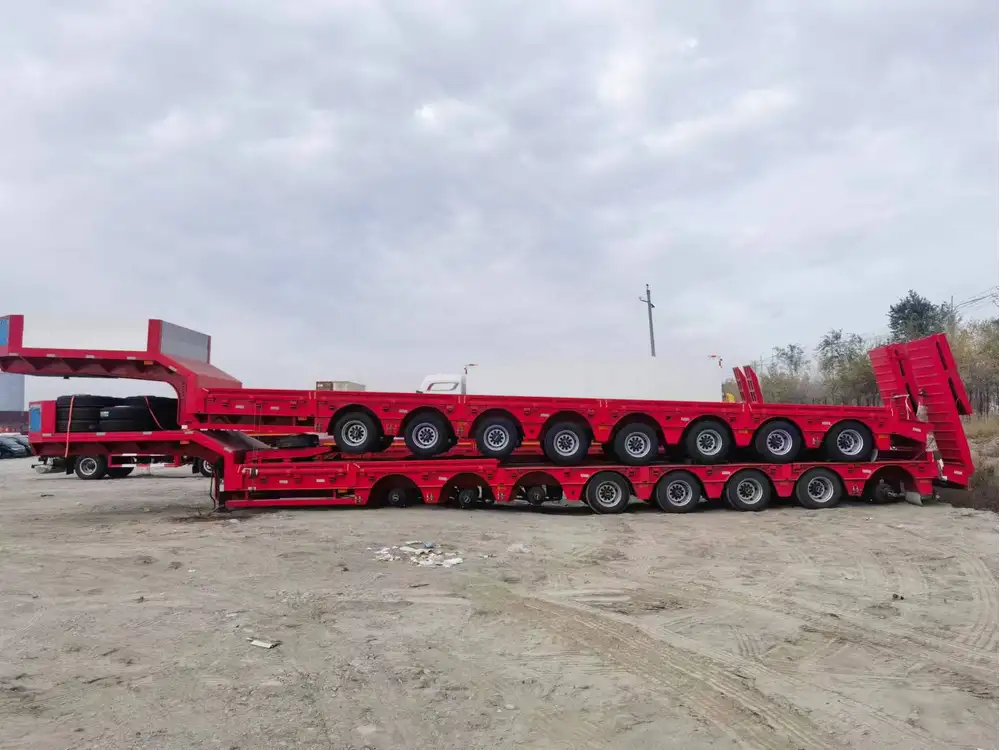In the realm of commercial transportation, understanding the dimensions of vehicles is paramount for efficiency and compliance. Among these dimensions, the width of a tractor trailer holds significant importance. This article delves into the intricacies of tractor trailer width, exploring various factors that influence it, potential regulations, and practical implications for manufacturers, owners, and operators alike.
1. What is a Tractor Trailer?
Before addressing specific measurements, let’s clarify what constitutes a tractor trailer. A tractor trailer, often referred to as an articulated lorry, consists of two main components: the tractor (the front engine component) and the trailer (the rear cargo section). Together, they form a vehicle designed primarily for the transportation of goods over long distances, operating on highways and rural areas alike.
1.1. Components and Structure
- Tractor: The powerful front part that houses the engine and towing mechanism.
- Trailer: The container or platform used for carrying cargo, which can be configured in several ways, depending on the industry needs.

1.2. Variants of Tractor Trailers
- Flatbed Trailers: Ideal for heavy loads like machinery and lumber.
- Reefer Trailers: Temperature-controlled for perishable goods.
- Dry Van Trailers: Enclosed space suitable for most freight types.
2. Standard Width of Tractor Trailers
The answer to “what’s the width of a tractor trailer?” leads to myriad factors including regional regulations, truck configuration, and intended use. Generally, the standard width for tractor trailers in the United States is approximately 8.5 feet (102 inches). This measurement includes the entire vehicle while in motion and adheres to federal guidelines for commercial trucks.
2.1. Federal Regulations
Federal regulations mandated by the Federal Highway Administration state that:
- Maximum Width: 102 inches (8.5 feet) for standard trailers.
- Exceptions: Some states allow wider configurations, particularly for specialized loads which may necessitate permits.

2.2. International Standards
In various countries, tractor trailer width can differ. For example:
| Country | Standard Width |
|---|---|
| United States | 8.5 ft (102 inches) |
| Canada | 8.5 ft (102 inches) |
| European Union | 2.55 m (8.37 ft) |
| Australia | 2.5 m (8.2 ft) |
Understanding these variances is crucial for operators planning international or cross-border trips.
3. Factors Influencing Width
Tractor trailer width is not a standalone dimension; rather, it is affected by a myriad of contextual factors. Here we explore some key considerations:
3.1. Cargo Type
The nature of the cargo can influence the choice of trailer width. For example:
- Oversized Loads: Often require special permits and wider trailers beyond standard specifications.
- Specialized Equipment: Some materials, like heavy machinery, may necessitate a flatbed trailer with customized dimensions.

3.2. State Regulations
Different states have distinct laws regarding trailer width, that can include:
- Transporting Specific Goods: Restrictions may be placed based on load type requiring adherence to state-specific vehicle dimensions.
- Seasonal Adjustments: Some states may alter load dimensions during specific seasons or road conditions.
3.3. Manufacturer Specifications
Each manufacturer generally provides specific guidelines based on their design principles:
- Weight Distribution: Effects on the vehicle’s handling and stability.
- Aerodynamics: Wider trailers may encounter more drag or fuel inefficiency.
4. Practical Implications of Trailer Width
Understanding the width of your tractor trailer impacts several areas of operation, which we elaborate upon below.

4.1. Highway Compliance and Safety
Adhering to width regulations ensures safe transit on highways. Excessively wide loads can lead to:
- Increased Accidents: Narrow lanes can present challenges for wider trailers, increasing collision risks.
- Higher Liability: Operators of oversize vehicles may face legal ramifications if found not compliant.
4.2. Load Capacity Considerations
The width also influences how much cargo can be safely loaded and transported. Each trailer type has weight limits and configurations that maximize its efficiency based on its width.
4.3. Fuel Efficiency
Wider trailers may have implications for fuel consumption due to drag. Operators must consider how the size correlates with overall operational costs, including:
- Maintaining the Balance: It’s crucial to achieve an optimal design between cargo capacity and aerodynamic efficiency.

4.4. Parking and Maneuverability
Wider trailers can complicate parking maneuvers, particularly in urban settings or loading docks. Many operators find that understanding their trailer’s dimensions helps them navigate tight spots effectively.
5. Width Does Matter: User Considerations
When purchasing or operating a tractor trailer, it’s vital to address these user-centric considerations:
5.1. Decision-making Factors
Here are critical questions potential buyers or operators should ask themselves:
- What regulations govern my route?
- What types of cargo will I typically transport?
- How will the width affect my insurance costs and liabilities?

5.2. Trailer Customization
- Retractable Side Rails: Offering flexibility for different cargo widths.
- Adjustable Width Trailers: Enabling dynamic use depending on cargo and load requirements.
5.3. Route Planning
Thorough planning is pivotal, especially in regions with varying restrictions concerning volume and dimensions. Consider:
- Consulting local regulations prior to travel.
- Identifying designated routes for oversized loads.
6. Conclusion: Width is Just the Beginning
To summarize, knowing the standard width of a tractor trailer is essential, yet it represents only the tip of the iceberg in an extensive web of interrelated factors that govern transportation logistics. As a manufacturer, operator, or logistics professional, it’s not just about knowing the dimensions; it’s about harnessing that knowledge to navigate the complexities of freight transport effectively.

Key Takeaways
- Standard width in the U.S. is approximately 8.5 feet (102 inches), with variations based on region and regulations.
- The width influences safety, cargo capacity, fuel efficiency, and operational costs.
- Proper understanding and application of width considerations can enhance compliance and operational efficiency, thus effectively lowering costs and improving reliability.
Engaging with the right information and consistently updating our knowledge on regulations and best practices ensures that businesses remain competitive in the ever-evolving logistics landscape. Always prioritize compliance and strategic planning, and you will pave the way for successful transportation endeavors.



